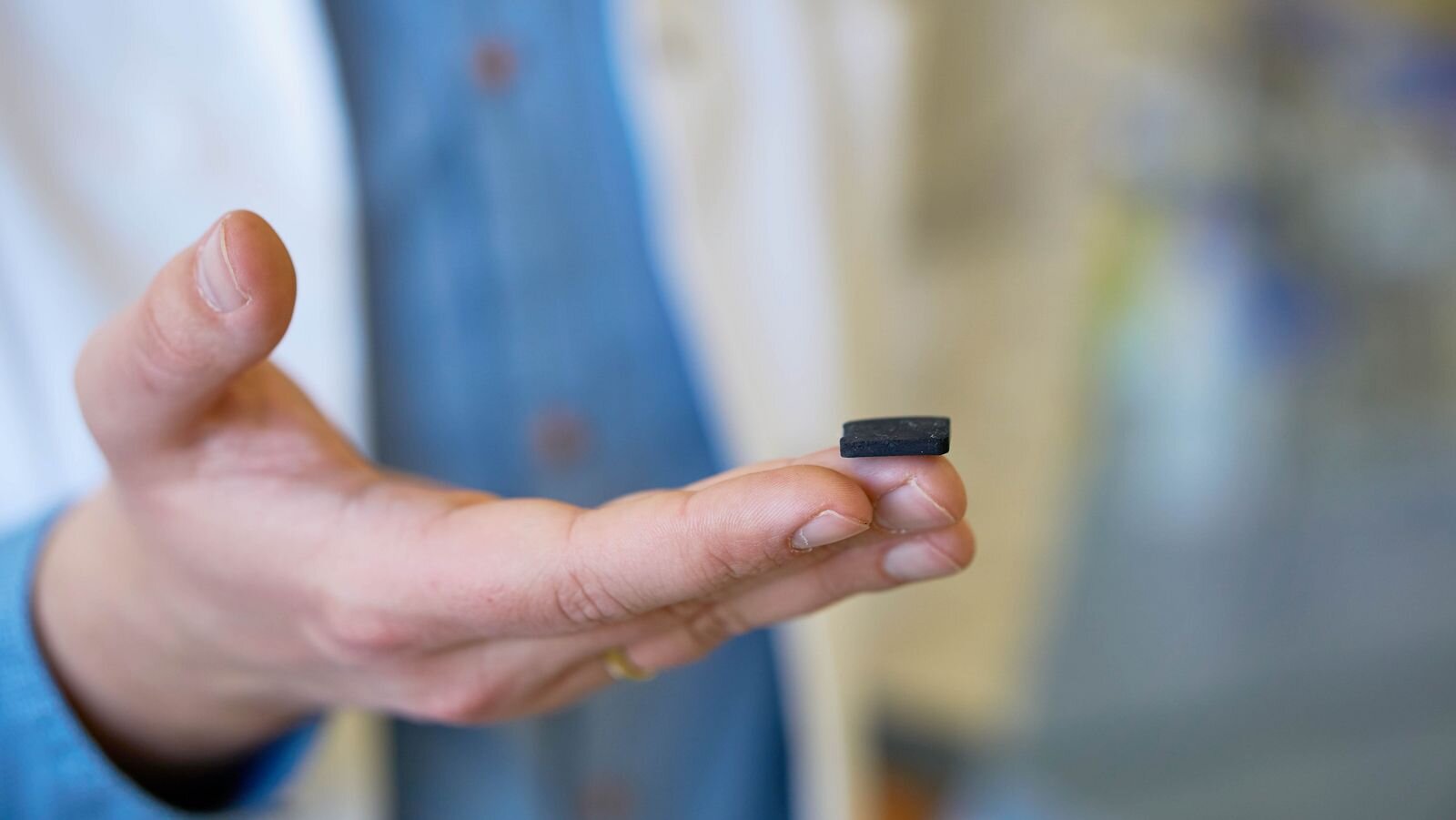
‘Smart’ containers can be customized to drive chemical reactions
Armed with a three-dimensional (3D) printer and the type of silicone-based sealant typically used for bathrooms, researchers have demonstrated a novel way to control chemical reactions: by making the reaction vessel an integral part of the experiment itself. The results, published 15 April in Nature Chemistry1, could open the door to a new generation of custom labware made to suit individual researchers’ needs.
Led by Leroy Cronin, a chemist at the University of Glasgow in Scotland, the researchers took advantage of 3D printing — a computer-guided process that builds up solid objects layer by layer — to cast a variety of reaction vessels from the quick-setting bathroom sealant. One vessel was printed with catalyst-laced ‘ink’, enabling the container walls to drive chemical reactions. Another container included built-in electrodes, made from skinny strips of polymer printed with a conductive carbon-based additive. The strips carried currents that stimulated an electrochemical reaction within the vessel.
“Chemistry, for the last 200 years, has been done in a fixed, passive reactor,” says Cronin, referring to the conventional glass flasks and other vessels that are standard issue in most chemistry labs. “That has just changed.”
Using the new labware — which they call “reactionware” — the group synthesized three novel compounds: two inorganic solids and one organic fluid.
The researchers also printed containers customized with holes and slots into which could be added extra hardware, such as glass viewing windows, fibre-optic cables or electrodes for monitoring and controlling chemical reactions. Integrated fibre optics helped the researchers analyse a solution’s changing colour inside the vessel without decanting the product.
In each experiment, scientists used a needle to pierce the reaction vessel and draw reagents from separate wells into a mixing chamber. Vessels made from bathroom sealant spontaneously re-seal around the puncture sites after use. The researchers also sliced through some of the containers they made to recover solid reaction products, then glued the two halves together for subsequent experiments.
According to Cronin, the 3D printer used for the work cost US$2,000, and the bathroom sealant is available at hardware stores. He and his colleagues designed the vessels and controlled the printer using free, open-source software. Cronin says that the system will allow scientists to test chemical processes in ways that might not have been economical before, such as producing just a few tablets of a particular drug.
Fruit-bearing frustration
The idea emerged when Cronin was working with microfluidic devices to draw reagents from one reaction chamber to another in controlled patterns. Finding the equipment he was working with frustratingly hard to modify, Cronin teamed up with Turlif Vilbrandt, a study co-author and co-founder of Uformia, a company based in Furuflaten, Norway, that makes modelling software for 3D printing. Cronin realized the technology could produce rapidly re-configurable labware, including chemically enhanced vessels.
“A lot of chemists will be thinking about what they can do with this system that is very cheap and also versatile,” says Zhenan Bao, an organic chemist at Stanford University in California. Bao sees potential for the technology to speed up experimental design and troubleshooting.
via Nature – Helen Shen ᔥ
Bookmark this page for “Homegrown labware” and check back regularly as these articles update on a very frequent basis. The view is set to “news”. Try clicking on “video” and “2” for more articles.








